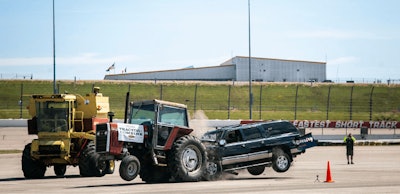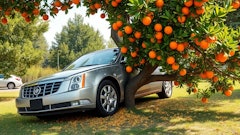
Iowa, Nebraska – Summertime means hay season, and hay season means more and more tractors on the roads–a phenomena rural Canadians are all too familiar with.
Farm equipment like tractors and combines are meant for driving, well, on farms. Their big tires and often wide axles help them drive through uneven fields and tow heavy machinery, but when these machines set out on highways and streets problems can occur.
The Iowa Speedway put farm machinery to the test on Tuesday, running passenger cars into various tractors.
“What we learn here we can apply to other crashes,” Bolzer said. “Nobody does this type of crash testing because it’s a small part of the overall market. They don’t want to spend the money for it. So for us to get this data from these crashes, it’s easier for us to reconstruct crashes that are similar to it in the future,” said Drew Bolzer, vice-president of the Midwest Association of Technical Accident Investigators.
Bolzer says a common accident is when a combine begins to turn into a field, but a vehicle behind them decides to pass because of the slow speed of the tractor.
He says that conducting tests like this may help change safety laws for the agricultural industry. He compares it to a series of crash tests on school busses that led to a law change in Iowa which requires new school busses be built with seatbelts.
The State Patrol, present at the test crashes, urged drivers to be patient when driving behind farm equipment – they may be taking their time, but they’re feeding the country.
According to The Canadian Agricultural Safety Program, farmers are five times more likely to be killed through an occupational accident than workers in any other industry. Agriculture also has the highest rate of disabling injuries of any occupation.
The most recent national report in Canada showed that traffic collisions accounted for 8 percent of fatalities in farmers between June and August.























